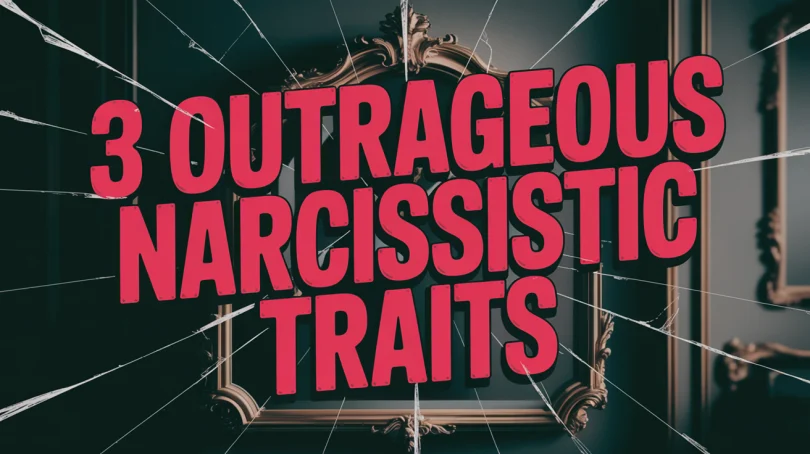Narcissism is a complex and cunning personality characteristic, most often misunderstood as being only vanity or charisma. It’s like a box of poisoned candy; each one may appear to be the same on the outside, but they contain something different, and that yields different flavors of harm. Let’s debunk myths, routines, and realities about narcissism to better understand its impact and defend ourselves.
Dispelling the Vanity Myth
One of the biggest misconceptions about narcissism is that all narcissistic people are obsessed with their appearance. This myth stems from the ancient story of Narcissus, who fell in love with his reflection, forever linking narcissism with vanity.
However, vanity is just a small thread in the complex tapestry of narcissism, and not all narcissistic individuals are appearance-focused. Some may neglect their grooming or style, yet still exhibit narcissistic behaviors like entitlement, manipulation, or a lack of empathy.
This misconception is dangerous. It can lead us to overlook narcissistic patterns in someone who doesn’t fit the “vain” stereotype or to unfairly label someone as narcissistic simply because they care about their looks. The truth is, narcissism isn’t defined by how much time someone spends at the gym or in front of a mirror it’s about the consistent patterns of behavior that harm others.
Related Topics:
Top 5 Overlooked Dating Red Flags
Why Vanity Isn’t the Core Issue
While some narcissistic individuals do invest heavily in their appearance and research shows they’re often perceived as more attractive this focus on looks isn’t what causes the most damage. The real harm comes from behaviors like gaslighting, manipulation, and a lack of consideration for others’ feelings.
For example, a narcissistic person might spend hours on their appearance, but the hurt occurs when they neglect responsibilities, belittle others, or prioritize their image over relationships.
Vanity can make narcissistic people appealing, especially early in relationships. Their charm and attractiveness can draw us in, but as the saying goes, “No one is hot enough to get away with gaslighting.” The key is to recognize that caring about appearance doesn’t inherently make someone narcissistic it’s the underlying patterns of selfishness and disregard for others that matter.
The Patterns That Define Narcissism
Narcissism is a rigid, maladaptive personality trait characterized by:
- Low or variable empathy: A diminished ability or unwillingness to understand others’ emotions.
- Entitlement and grandiosity: A belief they deserve special treatment or admiration.
- Pathological selfishness: Prioritizing their needs over others, often to a harmful degree.
- Manipulation and control: Using tactics like gaslighting, betrayal, or passive aggression to maintain power.
- Need for validation: Either craving excessive admiration or raging when they don’t receive it.
These patterns are consistent, especially with those closest to the narcissistic person, like family or partners. Charm and charisma, while often present in grandiose narcissism, are not requirements. This is crucial because many people in relationships with vulnerable or covert narcissistic individuals miss the signs, assuming narcissism must involve polish or success.
Vulnerable and Covert Narcissism: The Hidden Types
Not all narcissistic people are charming or charismatic. Vulnerable narcissism, for instance, presents as sullen, passive-aggressive, or socially awkward. These individuals may seem like victims, constantly aggrieved or struggling, which can evoke pity or guilt. Their lack of empathy, entitlement, and belief that the world owes them can be mistaken for sadness or difficulty rather than narcissism.
The term “covert narcissism” adds further confusion. Some use it to describe narcissistic people who are charming in public but cruel in private. Others equate it with vulnerable narcissism, marked by grievances and passive aggression.
In research, “covert” refers to internal thoughts and feelings, while “overt” describes outward behaviors like monopolizing conversations. Regardless of the label, the absence of charm doesn’t negate the narcissistic patterns that cause harm.
The Role of Empathy in Narcissism
A critical question about narcissism is whether narcissistic individuals lack empathy or choose not to use it. The answer is both troubling and enlightening: they have the capacity for empathy but often choose not to engage it. This selective empathy is what makes narcissistic relationships so painful.
Empathy has two components:
- Understanding others’ emotions: Reflecting on and being present with someone else’s feelings, even if you don’t share them.
- Self-reflection: Considering how your words or actions might affect others before acting.
Narcissistic individuals may demonstrate empathy during lovebombing phases, hyper-attuning to your emotions to win you over. However, once their needs shift, they may discard this empathy, ignoring your feelings to prioritize their own desires. This ability to “turn off” empathy is chilling it’s not that they can’t understand your pain; they often choose not to care.
Weaponizing Empathy
Worse, narcissistic individuals can weaponize empathy. By studying your emotional triggers whether it’s sadness, anger, or insecurity they gain tools to manipulate or gaslight you. For example, they might provoke you and then dismiss your reaction as “too sensitive.” This calculated use of empathy is what makes their betrayals feel so personal and devastating.
Stranger Empathy vs. Relational Empathy
Interestingly, narcissistic people may show “stranger empathy” more readily, like giving money to a homeless person or tipping generously when others are watching. These acts are low-effort and boost their image, feeding their need for validation. However, in close relationships, where empathy requires consistent effort, they often fall short, choosing convenience over care.
Protecting Yourself: Recognizing and Responding to Narcissism
Understanding the nuances of narcissism beyond vanity and charm empowers you to break free from self-blame, confusion, and cycles of hurt. Here are the key steps to protect yourself:
- Focus on Patterns, Not Stereotypes: Look for consistent behaviors like low empathy, entitlement, and manipulation, regardless of whether the person is charming or polished.
- Guard Your Vulnerabilities: Be cautious about sharing personal triggers with someone who turns empathy on and off. Protect yourself from manipulation by setting boundaries.
- Radically Accept the Reality: Accept that a narcissistic person may not care about your feelings, even if they’re capable of empathy. This painful truth can motivate you to set realistic expectations and disengage.
- Avoid Excusing Harmful Behavior: Don’t let someone’s attractiveness, struggles, or intelligence justify their toxic actions. No one’s “hotness” or “genius” excuses gaslighting or neglect.
- Seek Support and Heal: If you’re in a narcissistic relationship, seek support to navigate the trauma bond, whether it’s rooted in charm, guilt, or fear. Healing comes from recognizing the patterns and prioritizing your well-being.
The Toxic Candy Box
Narcissism is nuanced, complex, and deceptive. Like a box of toxic candy, it may appear enticing or harmless on the surface, but the effects can be bitter. Whether it’s a grandiose, charming bonbon or a sullen, aggrieved caramel, the harm lies in the consistent patterns of entitlement, low empathy, and manipulation. By understanding these patterns, you can move past self-doubt, set boundaries, and begin to heal.






